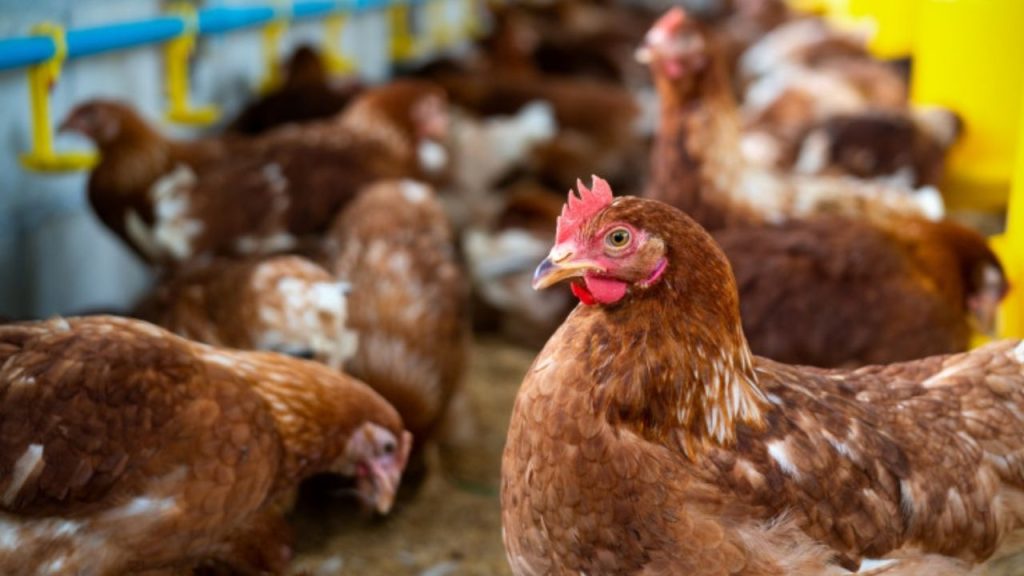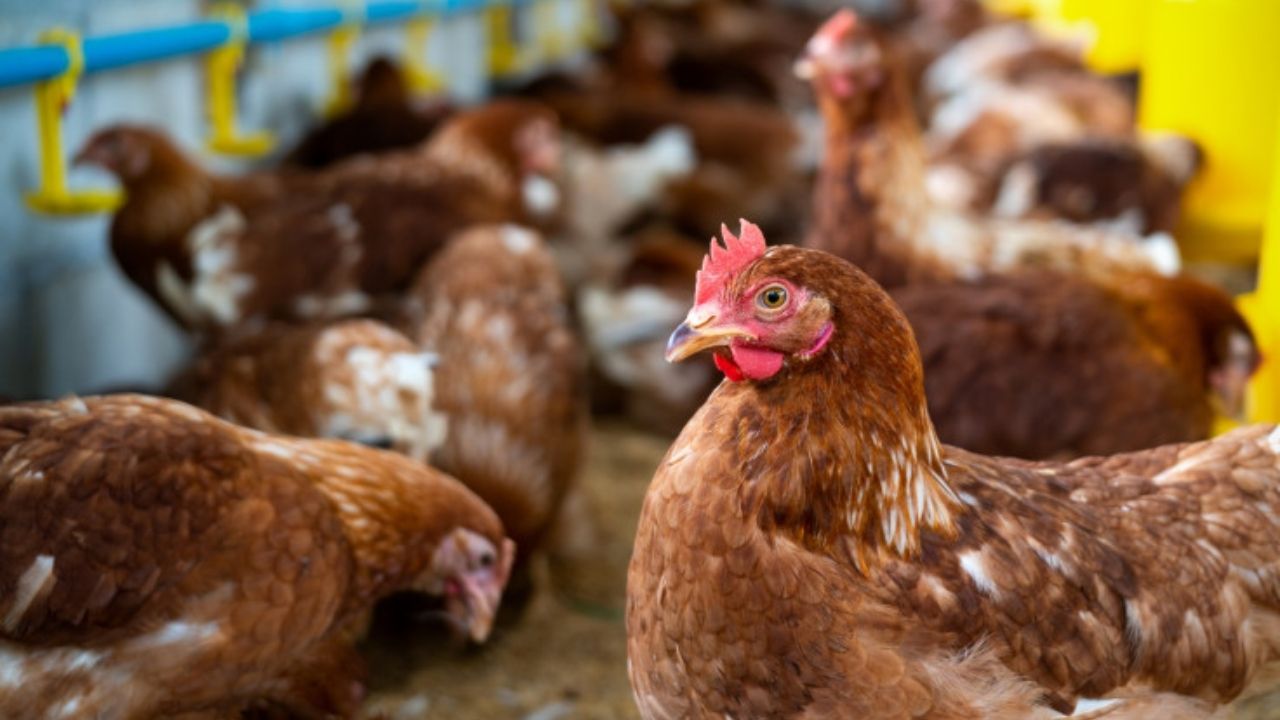The bird flu outbreak in Delanga, Puri, has put the region on high alert, with over 6,000 chickens set to be culled in an effort to contain the H5N1 virus. As the disease spreads, the authorities are taking swift action to prevent it from affecting both the local poultry industry and public health. Here’s everything you need to know about the situation and how it might impact you.

Bird Flu Confirmed in Delanga, Puri
| Topic | Details |
|---|---|
| Location | Delanga, Puri district, Odisha, India |
| Confirmed Virus | H5N1 Avian Influenza (Bird Flu) |
| Total Chickens to Be Culled | Over 6,000 |
| Culling Operations | Focused within a 1 km radius of the affected area |
| Surveillance Zone | A 10 km perimeter, with restrictions on poultry shops and farms |
| Previous Outbreaks | A similar outbreak in February 2025 led to the culling of over 11,700 chickens in Pipili, Puri |
| Response Teams | Five Rapid Response Teams (RRTs) are working on containment measures and public awareness |
| Health Recommendations | People are advised not to handle sick or dead poultry without protective measures |
The bird flu outbreak in Delanga, Puri, is a serious situation, but the authorities are taking all necessary precautions to contain the virus. While the risk to humans remains low, it’s important to remain vigilant and follow public health guidelines to prevent further spread. If you live in or around affected areas, stay informed, and follow the precautions recommended by local health experts.
What’s Happening in Delanga, Puri?
In July 2025, the Puri district, located in Odisha, India, faced a concerning outbreak of bird flu—also known as avian influenza. The virus in question is the H5N1 strain, a particularly dangerous variant that primarily affects birds but can occasionally spread to humans. This virus can be transmitted through direct contact with infected birds, their droppings, or contaminated surfaces.
The outbreak began to unfold when several unexplained poultry deaths were reported in the Bada Ankula village, part of Delanga, on July 9. Local residents noticed the deaths and immediately alerted the authorities. The animal husbandry department quickly sprang into action and collected blood samples from the deceased poultry. Laboratory tests confirmed the presence of H5N1 on July 11, triggering immediate containment measures.
Local authorities have started a large-scale culling operation in the affected area, with more than 6,000 chickens being slaughtered to prevent the virus from spreading further. Additionally, they’ve established a 10 km surveillance zone, which includes poultry farms, shops, and markets, in order to track any other potential infections. All chicken shops in the area have been ordered to close temporarily to stop further transmission.
Why Is Bird Flu So Dangerous?
Bird flu, especially the H5N1 strain, poses several risks, both to poultry and human health. Although human infections are relatively rare, they can be severe and sometimes fatal. H5N1 spreads mainly among birds, but it can also cross over to humans under certain conditions, particularly if there is close, direct contact with infected animals or their droppings.
For the local economy, outbreaks like this can devastate the poultry industry. The culling of thousands of chickens is not only a public health measure but also an economic necessity. Farmers, poultry sellers, and local markets can face major financial losses when an outbreak occurs. Furthermore, poultry exports can be affected, hurting the broader economy.
For example, in February 2025, a similar bird flu outbreak in the nearby Pipili area resulted in the culling of over 11,700 chickens. That incident caused significant disruption, and the measures taken during the outbreak—such as quarantine and market closures—had a ripple effect on local businesses.
Key Steps Taken by Authorities in Response
To contain the current outbreak and minimize its impact, several critical measures are being put in place:
1. Culling of Infected Poultry:
As of today, over 6,000 chickens will be culled in Delanga. This operation is being carried out with precision, and officials are ensuring that it is done humanely to minimize suffering. The goal is to halt the spread of the virus by removing any infected birds from the population.
2. Surveillance and Quarantine Zones:
Authorities have created a 10 km radius surveillance zone around the affected area. This zone is essential for tracking any new cases and preventing the virus from spreading further. Within this zone, authorities are monitoring poultry farms, markets, and individual households to check for any signs of infection.
3. Public Awareness Campaign:
Five Rapid Response Teams (RRTs) have been deployed to raise awareness about the bird flu and encourage people to take precautions. This includes advising farmers to monitor their poultry for signs of illness, avoid handling sick birds without proper protective gear, and report any unusual deaths in their flocks.
4. Precautions for Humans:
While human cases of bird flu are rare, experts advise the public to avoid contact with sick or dead poultry. Anyone handling poultry is urged to use gloves and masks and to wash their hands thoroughly afterward.
How Can You Protect Yourself from Bird Flu?
If you live in an area affected by bird flu, there are several practical steps you can take to protect both yourself and your community:
- Avoid Contact with Sick Poultry: If you notice any poultry in your area behaving unusually or showing signs of illness (such as lethargy, coughing, or swelling), stay away and report it to the authorities.
- Proper Hygiene: Wash your hands thoroughly after any interaction with poultry. This includes after handling birds, eggs, or anything that could be contaminated with bird droppings.
- Wear Protective Gear: If you work with poultry, wear gloves, masks, and other protective gear when handling birds, especially if you suspect they might be infected.
- Report Dead Birds: If you find dead birds in your area, don’t touch them. Report them to your local animal health authorities so they can investigate the cause of death.
- Limit Poultry Movements: During an outbreak, it’s wise to restrict the movement of poultry to prevent the spread of infection.
Odisha Mining Corporation Sets Sights on 50 Million Tonnes of Mineral Output in 2025–26
Centre Set to Approve Rs 8,300 Crore, 110-Km Bhubaneswar Bypass Project
BDO’s Driver Accused in Massive MGNREGA Scam in Odisha’s Bolangir
FAQs
1. What Is Bird Flu and How Does It Spread?
Bird flu is a viral infection that primarily affects birds, but it can also spread to humans in rare cases. The virus is transmitted through direct contact with infected birds, their droppings, or contaminated environments.
2. Is Bird Flu Contagious Among Humans?
Human-to-human transmission of bird flu is rare. However, it can occur if a person has close, direct contact with an infected bird. Protective measures, such as wearing masks and gloves, can reduce the risk.
3. What Should I Do If I Find Dead Birds?
If you find dead birds, do not touch them with bare hands. Contact your local authorities immediately so they can investigate the cause of death and take necessary measures to contain any potential outbreak.
4. How Long Does It Take for Bird Flu Symptoms to Appear in Humans?
If a person is infected, symptoms can appear within 2 to 8 days. These symptoms are similar to regular flu symptoms and include fever, cough, sore throat, and difficulty breathing.





